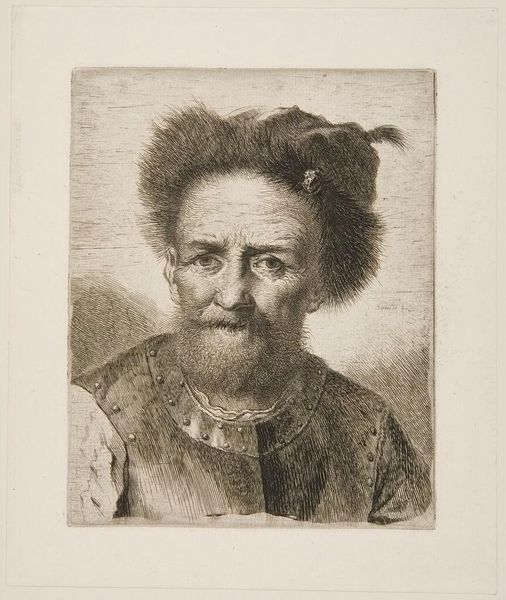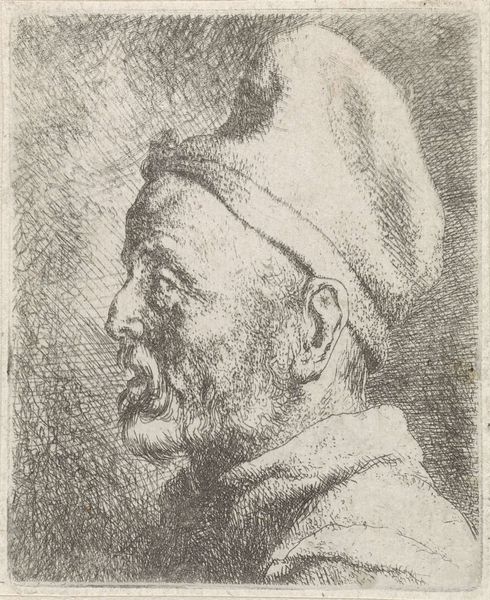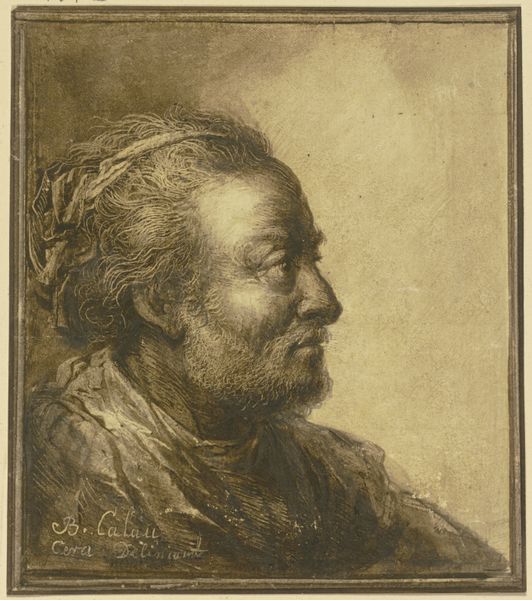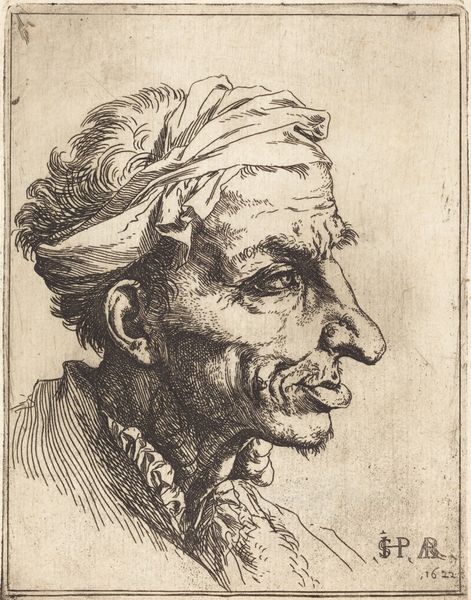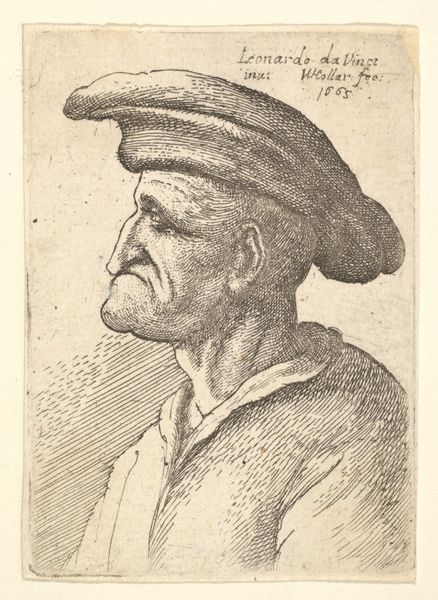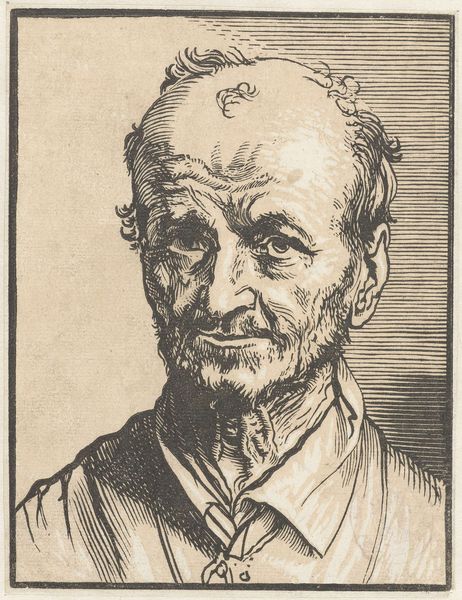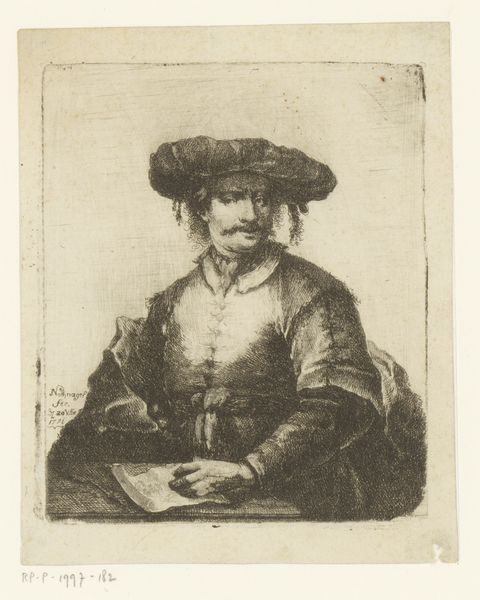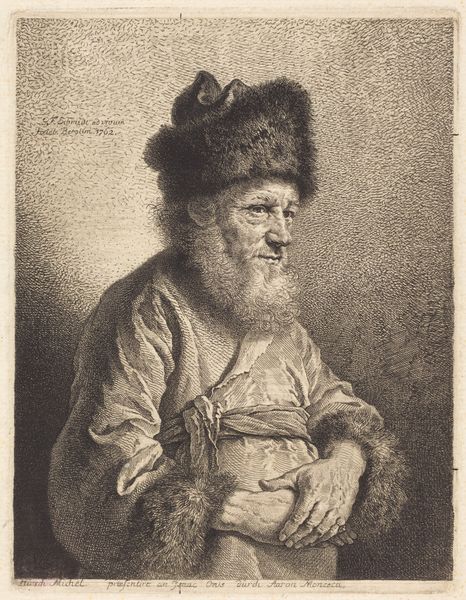
print, engraving
#
portrait
#
self-portrait
#
baroque
# print
#
genre-painting
#
engraving
Dimensions: plate: 18.9 x 15.1 cm (7 7/16 x 5 15/16 in.) sheet: 19.1 x 15.3 cm (7 1/2 x 6 in.)
Copyright: National Gallery of Art: CC0 1.0
Curator: Well, here's something that gets straight to the heart. We're looking at Georg Friedrich Schmidt's engraving, "The Old Soldier," dating back to around 1750. What springs to mind? Editor: Gnarled grace, maybe? The texture, etched by so many lines, it gives him this rough-hewn presence, like a tree that has stood for centuries, weathering every storm. He’s seen things, hasn't he? You can read it in the corners of his eyes, a life mapped on his face. Curator: Absolutely. And those details, achieved through the engraving technique, capture an amazing amount of light and shade. Schmidt was known for his skill in translating painterly effects into print, and in this case, he plays with light to create a rich, almost melancholic atmosphere. Interestingly, he's looking directly at the viewer, creating this intense, unavoidable encounter. Editor: It’s a bit unnerving, honestly. Like being sized up, soul-deep. And the helmet…or is that more fur than metal? It throws off the balance. You've got this warrior persona clashing with weariness, the weight of age, everything seems on the verge of falling apart. What I really appreciate about Schmidt is how he shows that vulnerability; we often overlook those aspects when focusing on the strength displayed by soldiers, both modern and ancient. Curator: You’ve hit on something key there. This piece functions both as genre-painting and self-portrait. By the 18th century, the “mercenary soldier” archetype was widespread. They are often associated with low moral standards. There is something truly fascinating about how Schmidt attempts to bridge this gap by immortalizing his likeness as that of a soldier through this technique. Editor: And doesn't that spark so many thoughts about identity and roles we inhabit or get cast into? Perhaps it isn’t about seeing Schmidt playing "dress up." What if we look at the engraving to truly feel seen, to question, even, how roles intertwine with what feels deepest about who we are… And even if it is staged, how much staging goes into a lifetime? I can’t help feeling drawn in. Curator: He certainly makes you stop and contemplate, doesn't he? Schmidt, through his mastery of line and composition, presents a compelling portrait of aging, service, and selfhood, asking us to look closer, both at the image and perhaps ourselves. Editor: Definitely. A stark reminder that art isn’t just about surface beauty. Thanks, Georg, for making us dig a little deeper today.
Comments
No comments
Be the first to comment and join the conversation on the ultimate creative platform.
